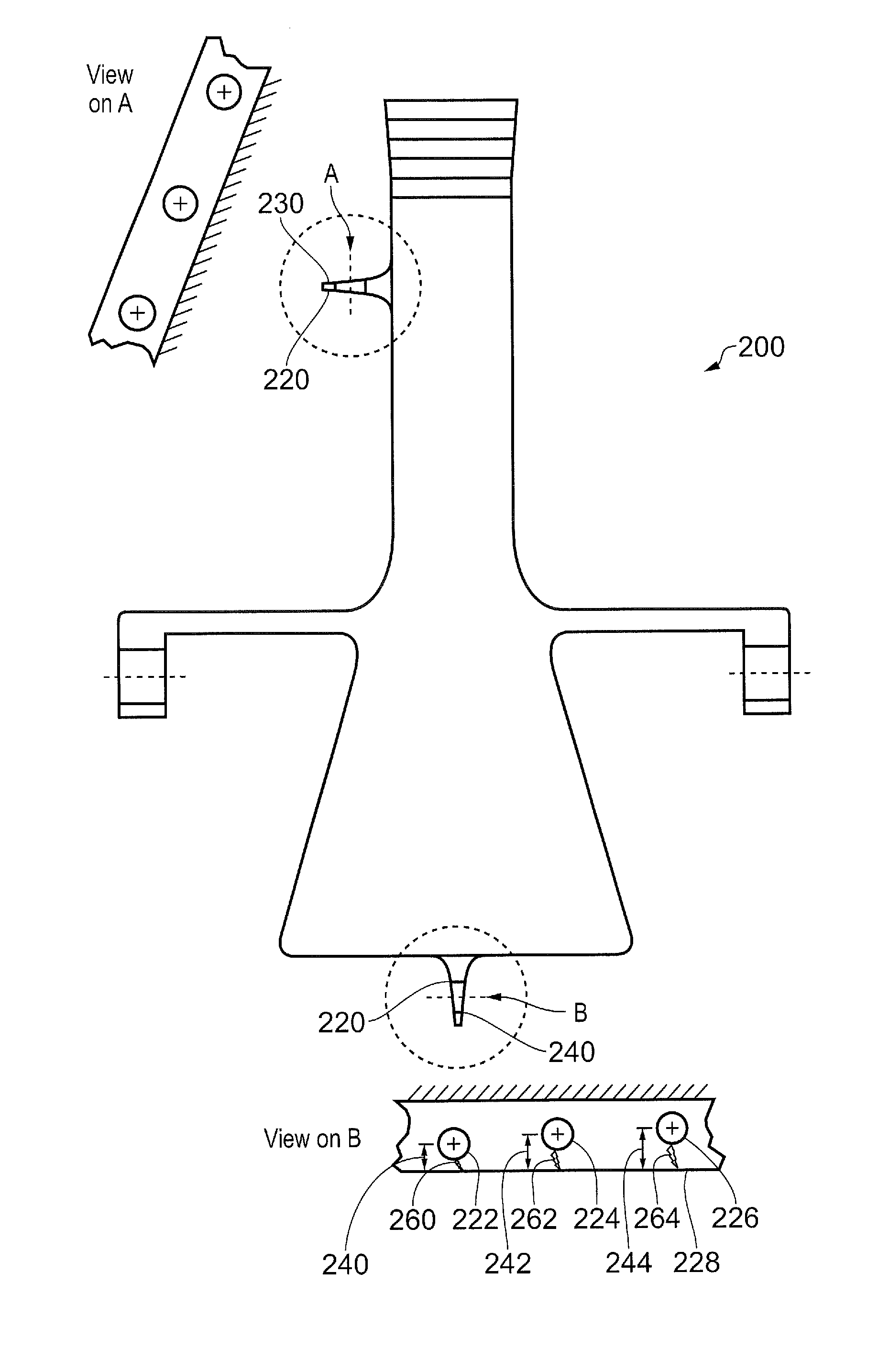Method and system for predicting the serviceable life of a component
a technology for components and service life, applied in the field of method for predicting the serviceable life of components, can solve problems such as non-hazardous cracks in detection features, and achieve the effect of easy implementation and quick detection
- Summary
- Abstract
- Description
- Claims
- Application Information
AI Technical Summary
Benefits of technology
Problems solved by technology
Method used
Image
Examples
first embodiment
[0060]Referring to FIG. 2, a component incorporating a detection feature according to the invention is designated generally by the reference numeral 10.
[0061]In the embodiment of FIG. 2, the detection feature 20 is formed as a single topographical feature 20, in the form of a hole 50; the hole 50 being positioned at a radially outermost portion of the component. The hole 50 is located a pre-determined distance 22 from a free edge 30 of the component 10.
[0062]The distance 22 is determined such that the resulting stress concentration factor at the topographical feature 20 results in the initiation of a non-hazardous crack 60 during use of the component 10. The non-hazardous crack 60 is initiated earlier in the service life of the component 10 than any hazardous crack 40.
[0063]The size and positioning of the hole 50 is determined by any known analytical modeling technique (such as, for example, finite element analysis).
[0064]In use, the component is visually inspected for cracks at the...
second embodiment
[0066]Referring to FIGS. 3A and 3B, a component incorporating a detection feature according to the invention is designated generally by the reference numeral 100. Features of the component 100 which correspond to those of component 10 have been given corresponding reference numerals for ease of reference.
[0067]The component 100 has a detection feature 120 which is formed as a topographical feature 120 comprising an array of four holes 150,152,154,156. Each of the four holes 150,152,154,156 are positioned a successively greater distance 122,124,126,128 from a free edge 30 of the component 100.
[0068]As previously described in relation to the first embodiment, the diameter and location of each of the holes 150,152,154,156 is arranged such that a non-hazardous crack 160 is initiated at a first hole 150 following a first quantity of operational hours of operation of the component 100.
[0069]The second, third and fourth holes 152,154,156 are sized and located in the component 100 such that...
PUM
 Login to View More
Login to View More Abstract
Description
Claims
Application Information
 Login to View More
Login to View More - R&D
- Intellectual Property
- Life Sciences
- Materials
- Tech Scout
- Unparalleled Data Quality
- Higher Quality Content
- 60% Fewer Hallucinations
Browse by: Latest US Patents, China's latest patents, Technical Efficacy Thesaurus, Application Domain, Technology Topic, Popular Technical Reports.
© 2025 PatSnap. All rights reserved.Legal|Privacy policy|Modern Slavery Act Transparency Statement|Sitemap|About US| Contact US: help@patsnap.com



